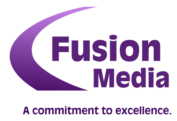
How technology has changed PR agencies. Change is inevitable.
It’s how we adapt that enables us to learn and grow. PR pros must be well-versed in change, and PR, advertising and marketing agencies have transformed over the last five to 10 years.
 Here’s how agency pros have updated their roles in an era of social media and tech changes to remain relevant in today’s increasingly digital world:
Here’s how agency pros have updated their roles in an era of social media and tech changes to remain relevant in today’s increasingly digital world:
Demonstrating ROI
PR pros, digital marketing gurus and advertising junkies have taken “traditional” and thrown it out the window. No longer are the days where brands want their agencies showing up to the big show dressed in a suit and tie.
We’ve become creative risk-takers, but agencies cannot always relate their work directly back to ROI—leading to being evaluated more critically.
Many brands prioritise channels that directly show ROI.
Here’s how today’s earned media can demonstrate value:
How technology has changed PR agencies
PR agencies that are creating content are generally doing so without the luxury of large paid media budgets that guarantee what you create is going to be seen.
What we’re doing is using our expertise in earning media coverage to create stories that media outlets and their readers will want to publish and share.
It’s a lot harder in some ways, but the ROI when you get it right is astronomical.
Combining traditional and digital
Today, a short video or picture tells a story on Instagram, Facebook and Twitter, as well as promotes brand awareness.
At first, many brand managers used social media to “stay with the times,” but now they see value with engagement, customer service and advertising.
Traditional advertising still exists, but ad agencies are now forced to create other sectors (such as digital teams) to close the gaps that some brands have previously ignored (including digital and social media advertising).
On the other hand, digital agencies have started successfully integrating traditional marketing initiatives.
PR, digital marketing, SEO and social all used to work within their own silos. Now we integrate each to share knowledge and findings, content and creative, and in turn produce more engaged customers and better results for our clients.
Brand managers’ future direction
In the early 2000s, brand managers weren’t able to engage with their audiences as easily as they can today. Now you can interact with your fans immediately through real-time channels.
This becomes difficult, as sometimes brand managers have to do this in 140 characters or less.
How technology has changed PR agencies
It drives short-term thinking, but does it do anything to build a long-term brand? Sometimes as an industry we’re trying to be so visible in the moment that we’re not sure we’re being substantive.
It’s crucial to keep in mind the real-time aspect of today’s channels but not dilute your brand’s voice and messaging.
All messaging, communication and content creation should align with the long-term brand vision.
These real-time channels have also immensely impacted crisis management and customer service.
Social media has changed the way crisis communication works, but many of the fundamentals remain the same.
Prior to social media, journalists call in updates so they could inform the public.
Today, response times and updates are expected to be rapid-fire, and stakeholders, support groups and activists can take down a brand in minutes.
Daily and national publications and TV news channels aren’t the only ones that are deemed important in today’s society.
Any reporter or influential social media can tweet about a crisis and either inform people or spread rumours.
How PR pros can adapt
We’re continuing to adapt to these changes for our clients. Many agencies and their employees are erasing the fine line between traditional and digital and moving towards becoming creative professionals. In order to respect client, audience and fan expectations, there’s a few things we can to do:
1. PR professionals must have clear and correct information if and when a crisis arises.
Although we want to relay information as timely as possible, it’s best to have correct and concise information prior to posting online.
Get it right the first time. An apology for wrong information can be forgiven quickly, wrong information and angry audience members can also escalate the situation for the worse.
2. Get approval and publish statements on social media, rather than traditional press releases.
Press releases can often go through several revisions and take more time to craft than a social media message. Gain approval to submit a statement on social media instead spending time on an entire press release.
3. Make users’ experience a priority.
When creating a plan for a campaign or hopping on a trending topic, keep your consumers in mind.
Integrate SEO, PR and social media in your efforts to close any gaps. This way, brand awareness will be achieved in the entire marketing mix.
If you want a marketing partner that is passionate about helping you grow your business then get in touch. It’s what we’re best at.





